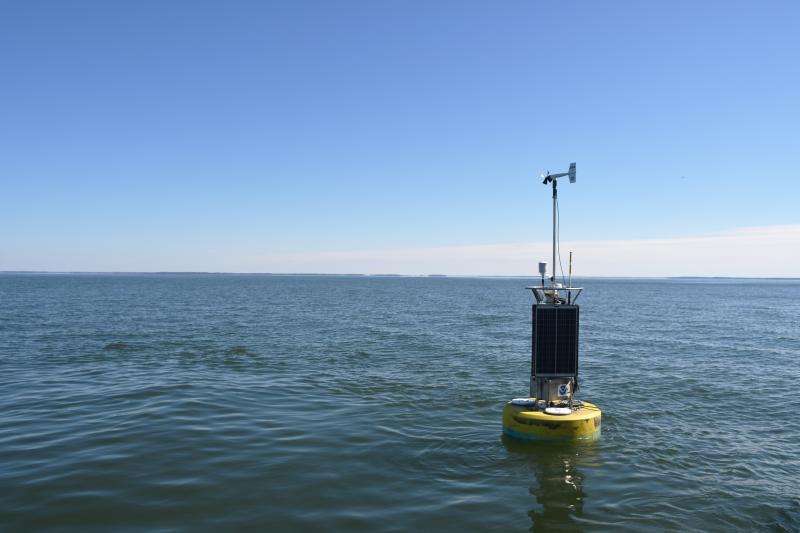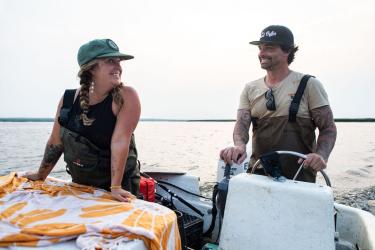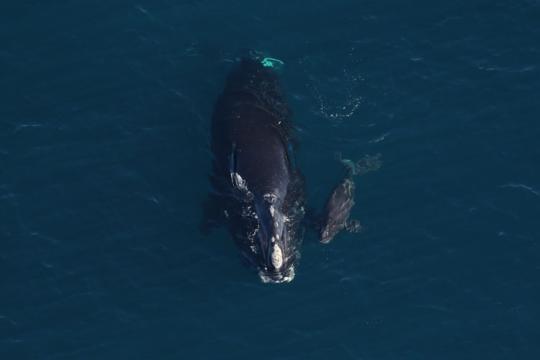Scientists use data from buoys and satellites to track water temperature and salinity levels in the Chesapeake Bay. Changes in water temperature and salinity affect the fish, crabs, and other species that live in the Chesapeake Bay. Scientists analyze the data to determine whether those levels were below, near, or above average. Then, using information about the biology and life cycles of some Chesapeake species, we can explore how 2020 water conditions may have affected the Bay’s fish and crabs.
Buoys in NOAA’s Chesapeake Bay Interpretive Buoy System (CBIBS) showed that the Chesapeake Bay experienced a warmer-than-average winter and a cooler-than-average spring in 2020. Satellites in NOAA’s CoastWatch Program also saw these trends. Water temperatures returned to average during the summer.
The warm winter may have affected some Chesapeake fish at a critical time in their life cycle. The Maryland Department of Natural Resource’s 2020 juvenile striped bass survey showed there were roughly five times fewer juvenile striped bass than average. This may be because there was not enough food for them at a very important time in their life to survive.
Juvenile striped bass eat plankton. Warm winters typically trigger an earlier-than-usual plankton bloom. But when they bloom early, this plankton often dies out before the young striped bass need to eat them. As a result, fewer of these fish survive.
But the warmer winter temperatures may have helped the Chesapeake Bay’s blue crabs in both Virginia and Maryland. Scientists survey the blue crab population each winter. They can do this more effectively at that time because blue crabs burrow into the mud to keep safe from cold water. The 2020 Winter Dredge Survey found the lowest overwintering mortality since the survey started almost 30 years ago. The average percent of dead crabs found in the survey from 1996 through 2020 was 4.53%. In 2020, it was only 0.36%.
Observations from the NOAA CBIBS buoys indicated higher-than-average salinity throughout 2020, particularly in the upper Chesapeake Bay at Gooses Reef. This is likely because this part of the Chesapeake Bay watershed had less rain and snow than usual. The U.S. Geological Survey’s measurements of winter freshwater flow rates at a site on Maryland’s upper Eastern Shore were lower than the previous decade’s average.
Salinity and freshwater input levels are important for species including striped bass and oysters. For striped bass, when water flow is high, the plankton they would like to eat get pushed downstream where striped bass larvae eat them. But in low-flow years like 2020, it is less likely that the plankton get pushed to where the larvae need them.
For oysters, higher salinity usually leads to more juvenile oysters. The 2020 Maryland Department of Natural Resources fall oyster survey did indeed find above-average amounts of juvenile oysters along the Eastern Shore.
Living resources in the Chesapeake Bay need oxygen. Hypoxia happens when there is too little dissolved oxygen in the water for fish, crabs, and other living beings. It can happen after excess nutrients are pushed into the Chesapeake Bay by surface runoff. Those excess nutrients, like nitrogen and phosphorus, can fuel algae blooms. When the algae dies, it decays. In the decay process, oxygen in the water is used. This can lead to hypoxia.
One computer model estimated that the overall severity and duration of hypoxia in the Chesapeake Bay was lower and shorter in 2020 compared to most recent years. The lower freshwater flows in winter may have helped because they potentially brought less surface runoff and nutrient concentrations to the Bay. Having less time when any parts of the Bay are hypoxic is good for the Bay’s living resources.
We will continue to monitor conditions in the Bay in 2021, and will track how they may affect the Chesapeake’s fish, crabs, and other critters.









